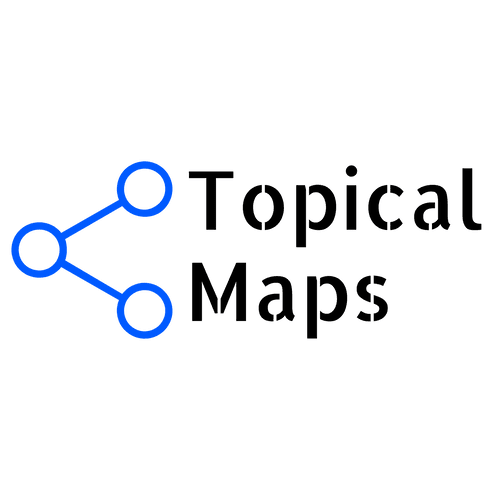In the ever-evolving world of digital marketing, staying ahead of the competition is important for SaaS companies.
One powerful strategy that can help boost your website’s visibility and organic traffic is creating a topical map.
At VH-info, we understand the importance of planning a semantic SEO strategy, topical mapping and getting links from topically relevant SaaS sites in achieving SEO success and mastering topical relevance.
What is a Topical Map?

A topical map is a visual representation of your website’s content, organized by main topics and subtopics. It helps you create a clear hierarchy and structure for your site, making it easier for both users and search engines to navigate and understand your content.
Why Do You Need A Topical Map?

Topical maps are essential for several reasons:
- Improving user experience: A well-structured website with logically organized content enhances user engagement and reduces bounce rates.
- Establishing topical authority: By covering a topic comprehensively, you demonstrate your expertise to search engines, increasing your chances of ranking higher for related keywords.
- Identifying content gaps: A topical map helps you spot areas in the logical structure of a given topic where you need to create more content to cover a topic thoroughly.
- Content Planning: Creating a topical map is crucial for effective website’s content planning. This strategic approach not only improves your website’s structure but also guides your site’s content creation efforts towards meeting user intent needs and search engine requirements.
- SERP Analysis: Analyzing Search results based on your site’s content plan can provide valuable insights into the competition landscape and help refine your content strategy. This combined with site structure and proper content marketing can help you become google’s go-to source for all the search queries in your niche and ultimately get higher rankings and better indexing by search engine crawlers.
The Importance Of Topical Map SEO
Topical maps play an important role in SEO by helping search engines understand the relationships between your site’s content. When you create content that covers a topic comprehensively and links related pieces together, you signal to search engines that your site is a valuable resource for that particular subject matter.
The Role of Topical Maps in SEO Strategy
Including topical maps into your SEO strategy can help you:
- Plan and organize your content creation efforts
- Optimize your site architecture for better user navigation and search engine crawling
- Identify opportunities for internal linking to boost your site’s topical authority
Create A Topical Map For Holistic SEO

Creating a topical map involves several steps:
Step 1: Topics Research and Selection
Start by identifying the main topics and subtopics relevant to your business. Use keyword research tools like Google Keyword Planner to find high-volume, low-competition keywords.
Step 2: Content Audit
Analyze your existing content to see how it fits into your topical map. Identify gaps and opportunities for improvement.
Step 3: Grouping and Organizing
Organize your topics and subtopics into a logical hierarchy, ensuring that each piece of content has a clear place within the structure.
Step 4: Creating Pillar Content
Develop comprehensive, high-quality pillar content for each main topic. This content should cover the topic in-depth and link to relevant subtopics.
Step 5: Creating Subtopic Articles
Create supporting articles for each subtopic, providing more detailed information and linking back to the main pillar content.
Step 6: Linking Strategy
Implement a strategic internal linking structure that connects related content and helps search engines understand the relationships between your pages.
Step 7: Monitoring and Updating
Regularly review your topical map and update it as needed to ensure it remains relevant and comprehensive.
How Can You Export Your Topical Map?
Once you’ve created your topical map, you can export it in various formats, such as:
- Spreadsheets
- Mind maps
- Flowcharts
- Visual sitemaps
What Are The Different Types Of Topical Maps?
There are several types of topical maps, each with its own advantages:
Bubble Map
A bubble map uses circles of varying sizes to represent topics and subtopics, with larger circles indicating more important or comprehensive content.
Tree Map
A tree map organizes topics and subtopics into a hierarchical structure, with main topics at the top and subtopics branching out beneath them.
Flowchart
A flowchart uses boxes and arrows to represent the relationships between topics and subtopics, showing how users might navigate through your content.
Mind Map
A mind map is a visual diagram that radiates out from a central topic, with subtopics and related ideas branching off from it.
Common Pitfalls and How to Avoid Them
When creating a topical map, be aware of these common pitfalls:
Overlapping Topics and Keyword Cannibalization
Ensure that your topics and subtopics are distinct and don’t compete with each other for the same keywords.
Keeping Your Topical Map Updated
Regularly review and update your topical map to ensure it remains relevant and aligned with your content strategy.
Advanced Techniques For Topical Mapping
To take your topical mapping to the next level, consider these advanced techniques:
AI and Machine Learning Applications
Use AI-powered tools to analyze your content and suggest new topics or opportunities for optimization.
Analyzing Competitor Topical Maps
Study your competitors’ content structures to identify gaps in your own topical map and find new opportunities for content creation.
What Are Some Tips For Creating an Effective Topical Map?
Creating an effective topical map requires careful planning and organization.
Here are some tips to help you create an effective topical map:
- Start with thorough keyword research to identify relevant topics and subtopics.
- Ensure your topical map aligns with your target audience’s needs and search intent.
- Do not ignore your existing website content and make sure it’s updated with the best practices.
- Also make sure to look through the related topics and related queries while planning your SEO content
- Create high-quality, comprehensive content for each topic and subtopic.
- Implement a strategic internal linking structure to reinforce topic relationships.
- Regularly review and update your topical map to keep it current and relevant.
FAQ’s:
How Often Should I Update My Topical Map?
It’s a good practice to review and update your topical map at least once a quarter, or whenever you make significant changes to your content strategy.
Can Small Businesses Benefit From Topical Mapping?
Yes, businesses of all sizes can benefit from topical mapping, as it helps organize content, improve user experience, and boost SEO performance.
How Does a Topical Map Improve SEO?
A topical map improves SEO by helping search engines understand the relationships between your content pieces, establishing your site’s topical authority, and providing a clear structure for users to navigate.
What Tools Can Help With Creating a Topical Map?
There are various tools available, such as mind mapping software, spreadsheets, and specialized SEO tools that can help you create and manage your topical map.
How Do I Choose The Best Data to Include in my Topical Map?
Focus on including data that is relevant to your target audience, aligns with your business goals, and has the potential to drive organic traffic to your site.
Is Topical Mapping Suitable For All Types Of Websites?
Yes, topical mapping can be beneficial for any website that aims to provide valuable information to its users and improve its search engine rankings.
Can I Use a Topical Map if I Already Have Many Posts on My Site?
Absolutely! A topical map can help you organize existing content, identify gaps, and plan future content creation efforts.
Can I Create a Topical Map Without Any Prior Mapping Experience?
Yes, you can create a topical map even if you’re new to the concept. Start with the basics and refine your map over time as you gain more experience.
How Can I Ensure The Accuracy Of My Topical Map?
To ensure accuracy, base your topical map on thorough keyword research, analyze user engagement metrics, and regularly review and update your map as needed.
How Often Should I Review and Update My Topical Map?
It’s recommended to review and update your topical map at least quarterly, or whenever you make significant changes to your content strategy.
Can Topical Maps Replace Traditional Keyword Research?
No, topical maps should be used in conjunction with traditional keyword research to create a comprehensive SEO strategy.
How to Balance Between Broad and Niche Topics in My Map?
Aim to create a balance between broad, pillar content that covers main topics and more specific, niche content that dives deeper into subtopics.
Are There Any Free Tools For Topical Map Creation?
Yes, there are several free tools available, such as mind mapping software and spreadsheet applications, that can help you create a basic topical map.
Conclusion
Understanding and utilizing knowledge graph in your website’s structure is essential for effective SEO. Planning a topical map strategy, can help you can organize your content in a user-friendly manner that also aligns with search engine algorithms. Topic maps provide a visual representation of knowledge graph, allowing for strategic placement of main topics and subtopics.
Creating a topical map is a powerful strategy for improving your website’s SEO performance, user experience, and overall content quality. Organize your content into a clear hierarchy and interlink related pieces to establish your site as an industry authority and increase organic traffic.
At VH-info, we understand the importance of topical mapping in SaaS link building and SEO success. Our team of experts can help you create a comprehensive topical map tailored to your business needs, ensuring that your content is optimized for both users and search engines.
Contact us today to learn more about how our link building services can help your SaaS company thrive in the competitive digital landscape.

